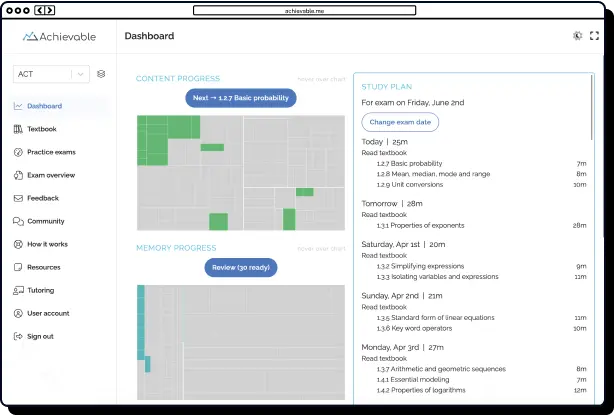
Ace your Life and Health Insurance exam




Table of contents
- Understanding the exam
- Why do you need this exam?
- What does the exam look like?
- What topics are covered?
- Study tips that actually work
- 1. Make a realistic study plan
- 2. Use active recall
- 3. Practice spaced repetition
- 4. Study in layers, not all at once
- 5. Use real-life scenarios
- 6. Focus on your weak spots
- 7. Take smart breaks
- Common mistakes to avoid
- Tools and resources to succeed
- Extra resources
- The final week: what to do before exam day
- Final Thoughts
Preparing for the Life and Health Insurance exam, whether you’re launching a new career or expanding your credentials as an agent, can unlock access to meaningful, in-demand positions within the insurance industry. However, the life and health insurance licensing process can feel intimidating. There’s a lot of information to memorize, and the pressure to pass the Life and Health Insurance exam can be stressful.
That’s exactly why we created this comprehensive Life and Health Insurance exam study guide.

Understanding the exam
Why do you need this exam?
To legally sell life and health insurance in the U.S., earning your license by passing the Life and Health Insurance exam is essential. This standardized test, required in every state, may be administered as a life insurance exam, health insurance exam, or collectively as a Life and Health Insurance exam. While the content and passing score may differ slightly based on your state, becoming licensed is both a legal requirement and a critical step in establishing client trust. Successfully passing the exam prepares you to launch a stable and rewarding insurance career with confidence.
What does the exam look like?
Format: Multiple-choice questions
Length: Around 2 to 3 hours; varies by state
Number of questions: Usually 100 to 150
Score to pass: Often 70%, but check your state’s exact requirements
Delivery: Computer-based, taken at a testing center or online
What topics are covered?
1. Life Insurance
- The Life and Health Insurance exam covers important topics like term life, whole life, universal life, and variable life insurance policies.
- Beneficiaries, riders, and policy options.
- The application and underwriting process.
- Group versus individual policy distinctions.
2. Health Insurance
- The health insurance exam section reviews major types of health insurance plans, including HMOs, PPOs, POS plans, and disability insurance.
- Health insurance policy provisions, as well as cost-sharing terms like premiums, deductibles, and copays, are essential for the Life and Health Insurance exam.
- Long-term care coverage and Medicaid supplement policies.
- Mastering these health insurance topics is crucial for success on any health insurance exam or comprehensive life and health insurance test.
3. Ethics and Regulations
- The Life and Health Insurance exam tests your knowledge of federal laws such as HIPAA, COBRA, and the ACA, along with relevant state regulations.
- Producer conduct, ethical responsibilities, and fraud prevention are vital components emphasized in the exam.
- Compliance with both state and federal regulations is a recurring theme in the life insurance exam, health insurance exam, and any standard life and health insurance practice exam.
Study tips that actually work
1. Make a realistic study plan
Don’t just wing it. And don’t set yourself up to fail with a 4-hour daily plan you’ll never follow.
Instead:
- Block 1 to 2 hours a day, 5 or 6 days a week
- Break the syllabus into manageable chunks
- Set small goals (like “Finish Chapter 2 by Thursday”)
- Include review time every few days
2. Use active recall
This is a fancy term for quizzing yourself, and it’s one of the most effective ways to study.
Instead of just re-reading your notes, try:
- Answering practice questions
- Covering up the page and explaining the topic out loud
- Making your own flashcards (or using apps like Anki or Quizlet)
3. Practice spaced repetition
Have you ever learned something on Monday and forgotten it by Thursday? That’s normal unless you review it periodically.
Spaced repetition means reviewing material at increasing intervals:
- Review after 1 day
- Then, after 3 days
- Then, after 7 days
- Then again, just before the test
4. Study in layers, not all at once
You don’t have to master each topic all at once. Think of studying like painting:
- First layer: light, fast overview
- Second layer: details and examples
- Third layer: deep dive and practice questions
5. Use real-life scenarios
Let’s say you’re learning about term life insurance. Instead of memorizing the definition, create a little story in your mind.
Imagine:
“Sarah, age 30, buys term life insurance for 20 years to protect her kids while they’re young.”
Stories stick. Technical terms don’t.
6. Focus on your weak spots
We all have them: those topics you avoid because they seem difficult or uninteresting. But guess what? That’s exactly where you’ll make the most progress.
- Track what questions you’re getting wrong
- Review the theory behind them
- Re-test yourself in a few days
7. Take smart breaks
No, you don’t need to study for 6 hours straight. In fact, please don’t.
Try this instead:
- Study for 50 minutes
- Take a 10-minute break (move, hydrate, breathe)
- Repeat.
Your brain can only focus for so long. Breaks help refresh your attention span and protect you from burnout.

Common mistakes to avoid
- Don’t just memorize. Understanding beats memorization every time, especially for scenario-based questions.
- Don’t rush your prep. It’s better to study 3 or 4 weeks steadily than to cram for 2 days.
- Don’t skip pronunciation. Especially important if you’ll be explaining these terms to real people soon.
- Don’t forget to review. Repetition locks things in. Revisit flashcards, rewatch lessons, redo hard questions.
Tools and resources to succeed
Achievable’s Life and Health Insurance course is made to make things easier. You get:
- Easy-to-digest lessons (no jargon overload)
- Smart progress tracking
- Hundreds of realistic practice questions
- Built-in spaced repetition system to help you remember more
It’s everything you need, all in one place, built with real students in mind.
Extra resources
- NAIC Website (for rules and standards)
- YouTube channels or podcasts for quick topic reviews
- State insurance department websites for local rules
The final week: what to do before exam day
- Don’t study too hard now. Focus on reviewing your notes and identifying areas for improvement.
- Sleep matters. Get on a good sleep schedule.
- Check your test center rules. ID, confirmation email, permitted items.
- Talk positively to yourself. Confidence isn’t about being perfect; it’s about being prepared.

Final Thoughts
The Life and Health Insurance exam requires in-depth knowledge of both life and health insurance lines, as well as the ability to recall state-specific policies and procedures. Reviewing exam content, studying with Life and Health Insurance practice exams, and spacing out your preparation will make absorbing all the necessary information much more effective. With the right plan, consistent effort, and quality tools by your side, you can pass this exam and launch a successful insurance career.

